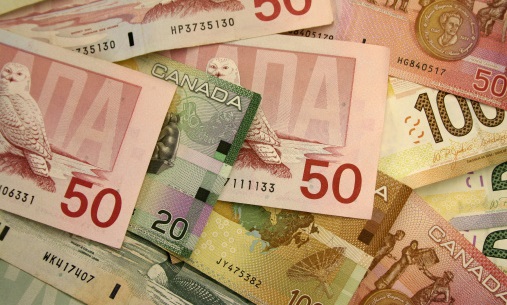The S&P 500 continued its recent run higher on Tuesday, hitting fresh intra-day record levels just short of 4600 before closing in the 4570s with on the day gains of about 0.2%. Earnings remain the key driver of recent optimism; as of Tuesday, 139 of the 166 S&P 500 companies to have reported Q3 earnings so far had beaten analyst expectations. It was tech giants Microsoft and Alphabet’s turn to report earnings after the close last night and both beat on top and bottom lines, while Twitter is a little higher in pre-market trade despite a slight miss on top line earnings estimates. The strength of the earnings season thus far has eased fears that major US companies are seeing their margins hit by recent inflationary pressures, thus seem for now to be shielding global equities from inflation worries that have persisted in recent weeks. Helping sentiment during yesterday’s session was also some optimistic data on the health of the US consumer; the Conference Board’s October Consumer Sentiment survey showed that sentiment improved this month, with its headline index rising to 113.8 versus forecasts for 108.0. With consumption such a critical part of the US economy, strong consumer sentiment is a positive sign that growth is likely to remain at healthy levels in the coming months.
The Wednesday Asia Pacific session was less positive than the Tuesday’s US one, with underperformance again seen in the Chinese equity space amid a combination of negatives; 1) Chinese authorities warned they would be tightening registration rules for younger internet users (weighing on Tech names), 2) the US banned China Telecom from operating in the US due to national security concerns and 3) property sector fears lingered with Chinese authorities said to be putting pressure on the billionaire founder of Evergrande to pay the company’s debt with his own personal wealth. The negative tone to Asia Pacific trade has carried through to Europe with indices in the region mostly pointing lower, while US equity futures are mostly close to neutral (ES in the mid-4560s). This morning has seen a further bombardment of earnings (McDonald’s was good, Boeing was a weaker than forecast), an ongoing theme which will of course be important to continue to monitor, but the most important earnings of the week are still yet to be released, with Amazon and Apple both reporting on Thursday.
Elsewhere in global financial markets, the theme of rising global inflationary pressures remains at the forefront of investors’ minds after Australia CPI numbers last night surprised to the upside (Core measures of inflation, anyway); the Trimmed Mean CPI rose to 2.1% YoY in Q3 versus forecasts for 1.8%. The Aussie got a slight boost and short-end Australian yields have surged as money markets saw a further hawkish repricing of RBA interest rate expectations, with three 25bps rate hikes now seen by the end of 2022. This despite the fact that the RBA continues to say there will not be hikes until 2024. FX strategists highlight the risk that if the RBA remains resolute in its dovish guidance, money markets could see some dovish repricing that could weigh on the Aussie (and short-end yields). After all, the bank has emphasised that it is mainly focused on getting wage growth up (as this will drive more sustained inflation) and may characterise the recent uptick as “transitory” (as other central banks have) and a result of global supply chain disruptions. Back to inflation news; we also had further inflationary signs from the US economy in the form of yesterday’s Conference Board survey showing 1Y consumer inflation expectations had risen to 7.0% from 6.5% in October and that the job differential (i.e. the ease of getting a job) had risen to its highest since 2000 (signs of a tight labour market).
Further inflationary signals from across the global and in the US have sent short-end US yields sharply higher again; 2-year yields went above 0.50% to hit fresh annual highs overnight, but in recent trade have admittedly fallen back to just under 0.49%. That contrasts to the price action being seen in longer-term US yields, with the 10-year yield under pressure and recent slipping back under the 1.60% level. Inflation expectations remain elevated (US 10Y breakevens remain close to recent multi-decade highs in the mid-2.60s%) and the drop is mostly a result of falling long-term real yields (10Y TIPS yields are testing -1.10% having slumped under -1.0% at the start of the week). But global commodity prices are coming under a bit of pressure with WTI and Brent benchmarks both down over $1.0 on the session (some analysts pointing to a bearish weekly API crude inventory report last night and profit-taking) and Copper down 1.5% (indicative of broad losses in the non-precious metal complex), which could weigh on inflation expectations today and put further downside pressure on long-term yields. For now though, markets continue to confidently price in front-loaded rate hiking cycles from most major central banks (barring the BoJ and to some extent the ECB).
Finishing up with a quick look at FX markets; the drop in long-term US yields is helping the yen recoup some ground against its peers and the safe-haven currency sits atop the G10 table today with USDJPY down about 0.4% but still close to recent highs and above 113.50. Tonight’s BoJ meeting is expected to be a non-event, with new economic forecast and plans to wind down some emergency Covid-19 financing programmes unlikely to change the ultra-dovish outlook for Japanese rates. Losses in crude oil appears to be modestly weighing on the Loonie (-0.3% vs USD) ahead of today’s Bank of Canada rate decision at 1500BST; the Loonie may also be suffering amid chatter amongst analysts that the bank’s commentary on the economy/guidance on interest rates might not live up to the hawkishness implied by money markets, thus resulting in some dovish market repricing. Sterling, meanwhile, is another underperformer, despite today’s well-flagged budget announcements from UK Chancellor of the Exchequer Rishi Sunak; with UK finances in better-than-expected health versus March forecasts, Sunak has some wiggle room and was able to announce around £30B in new spending. GBPUSD has this morning dropped back towards 1.3700 and EURGBP has rallied from slightly above 0.8400 to the 0.8450 mark. As noted, AUD was boosted slightly by hotter than expected inflation data overnight and AUDUSD currently trades just above 0.7500, while EURUSD, USDCHF and NZDUSD are all flat, with the latter trading just to the north of the 1.1600 level ahead of tomorrow’s ECB meeting.
In terms of the main events to focus on today; ahead of the BoC meeting at 1500BST and press conference with Governor Macklem at 1600BST (the bank is expected to hold rates but taper weekly QE purchases to CAD 1B from CAD 2B), it’s worth keeping an eye on September US Durable Goods Orders data (a good capex indicator) out at 1330BST. Crude oil traders will be watching official US inventory data at 1530BST after last night’s bearish private API report and bond traders will be watching a US 5Y auction at 1800BST.




